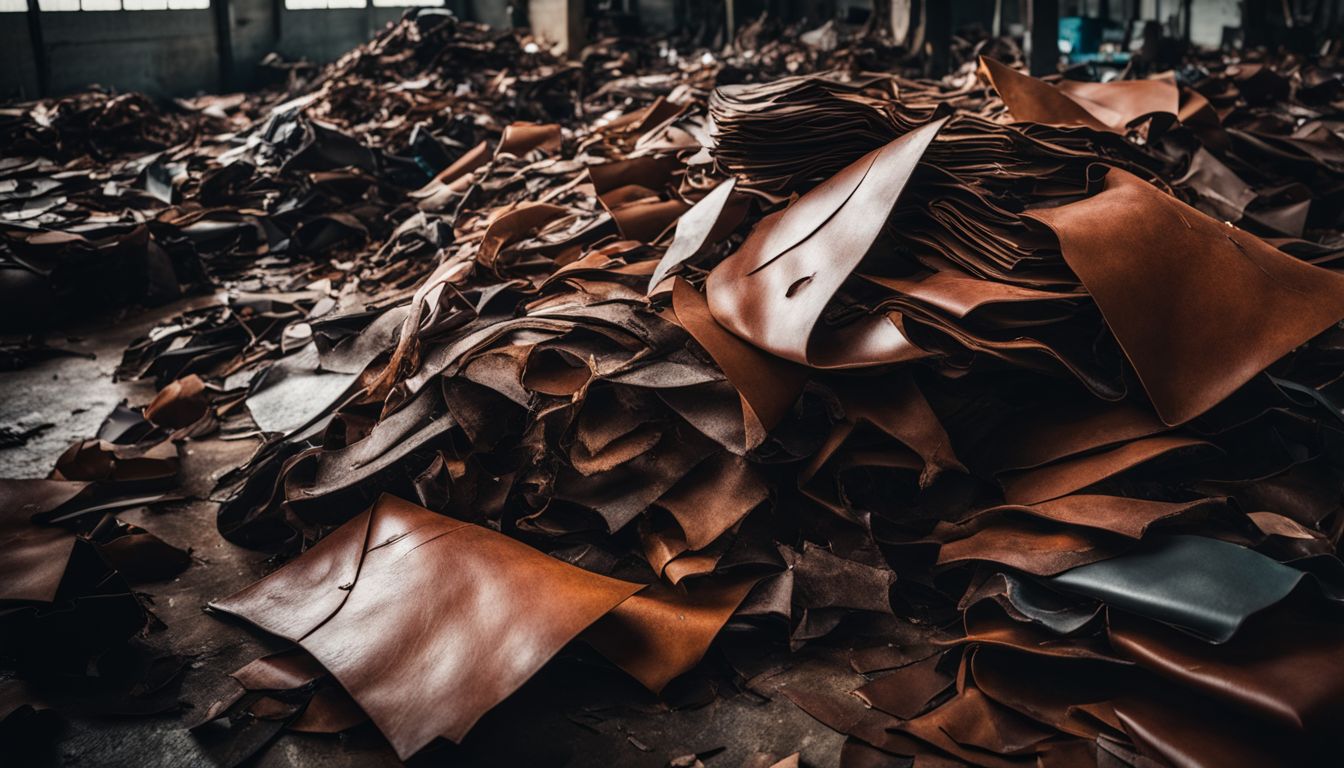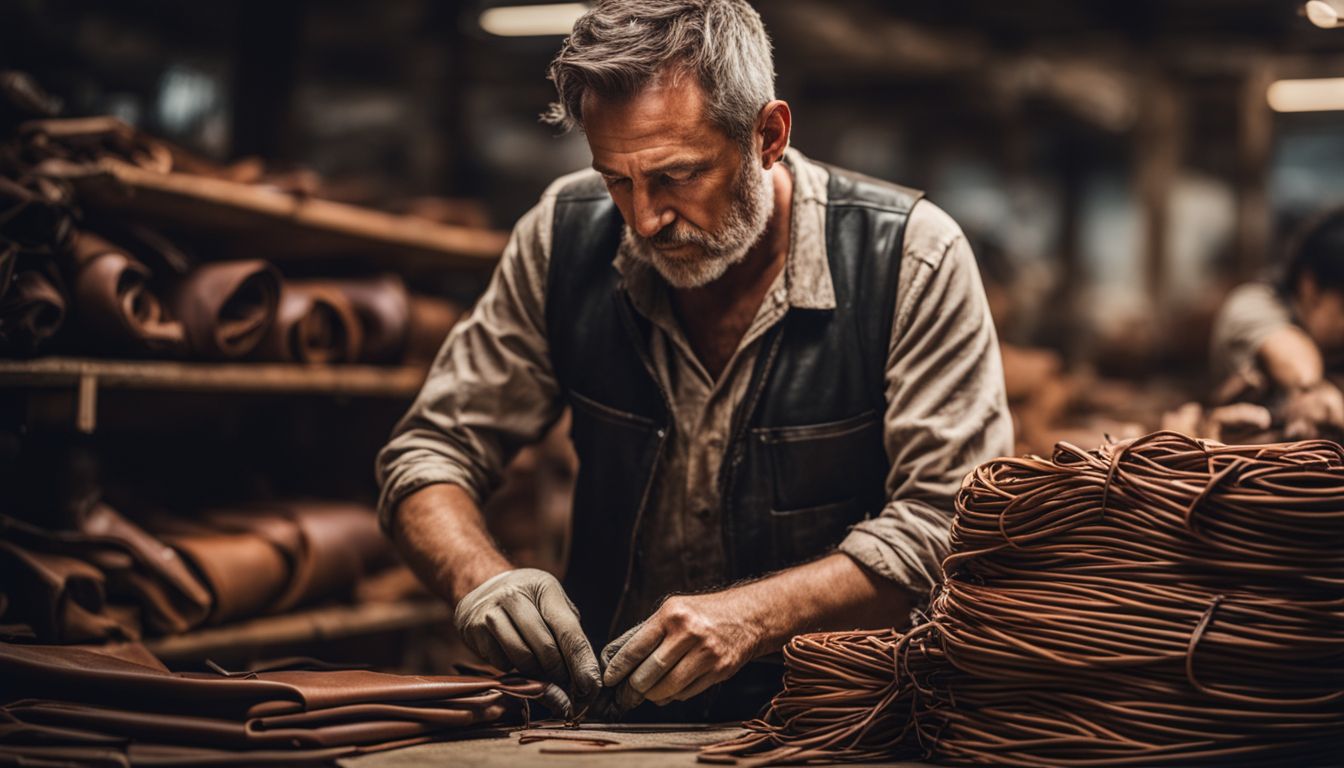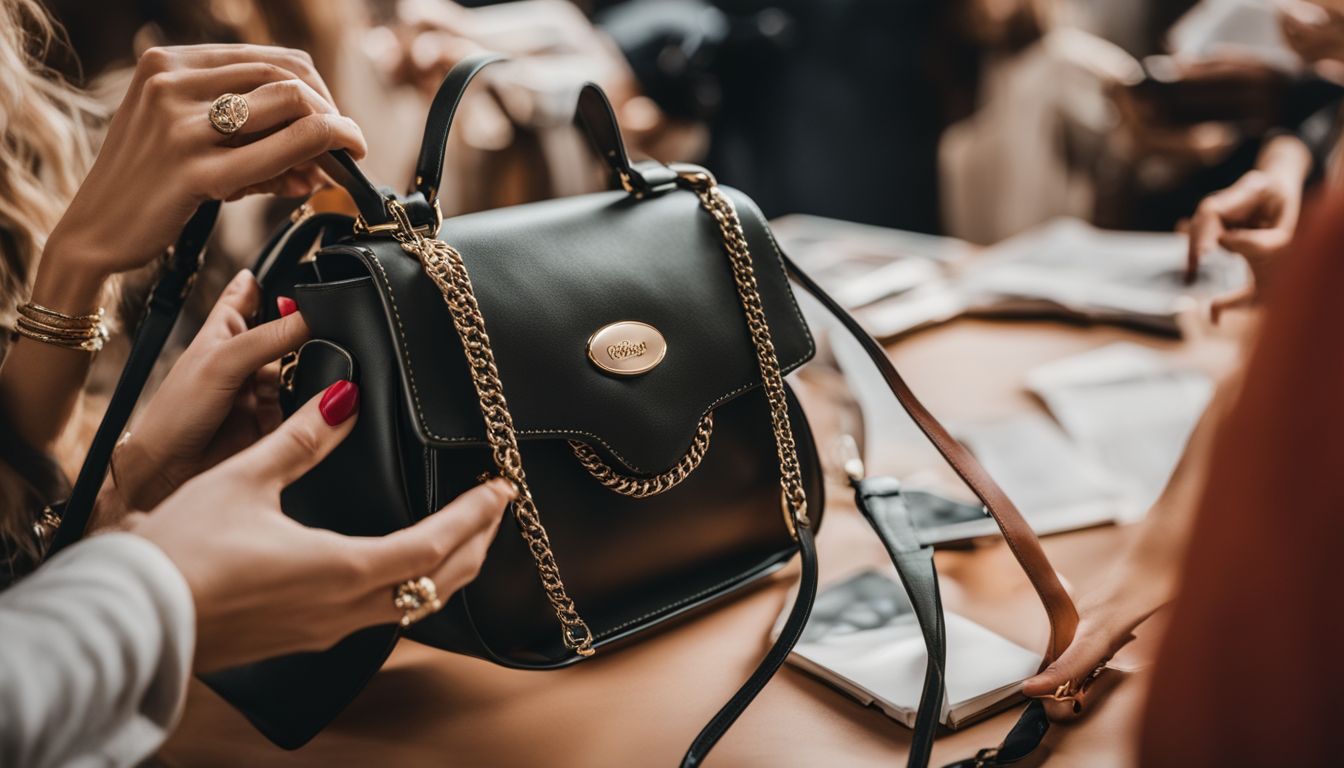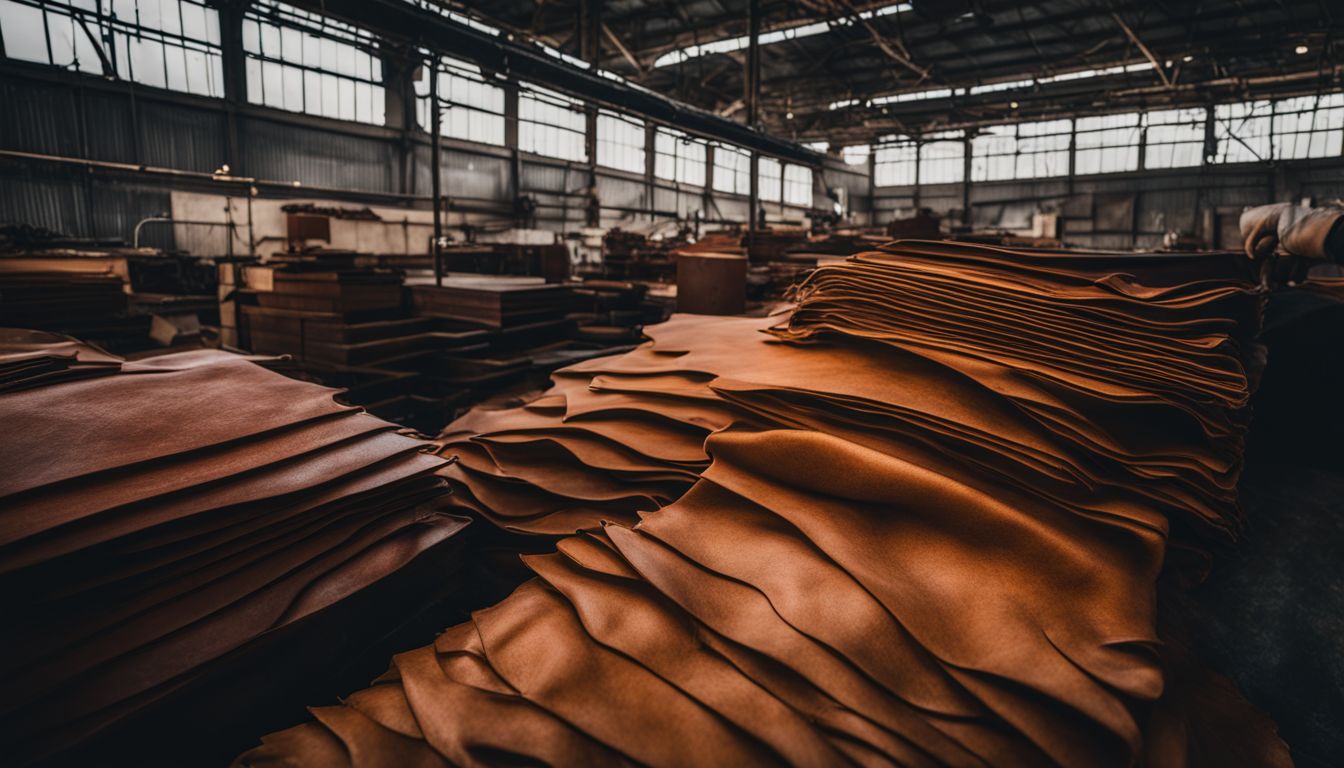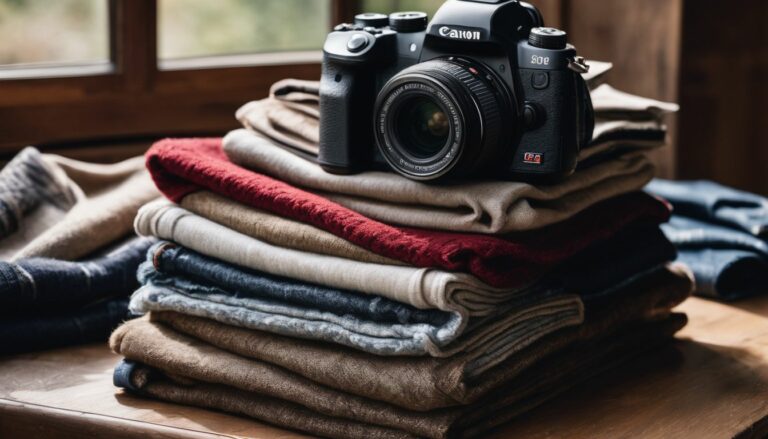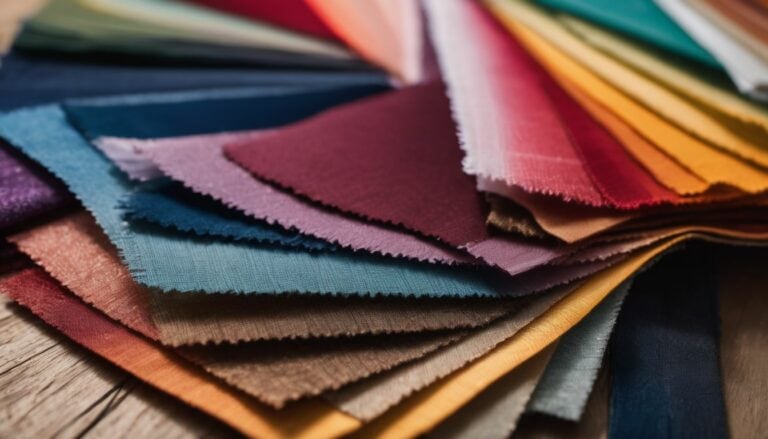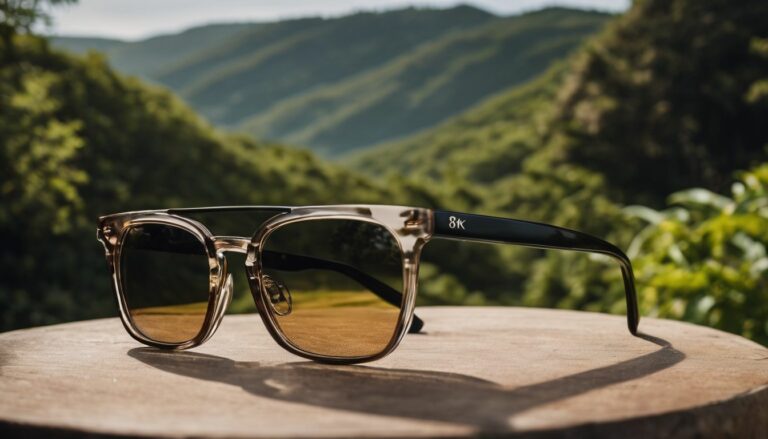Exploring the Controversy: Is Ethical Leather a Real Possibility or Just an Oxymoron?
The question of ethical leather is a hot topic in fashion today, leaving many consumers puzzled and passionate. Did you know that globally we produce over 32 billion square feet of leather each year? This blog aims to explore the complexities surrounding ethical leather: its possibilities, controversies, and if it can truly exist.
So let’s dive into this intriguing debate; there’s more to your leather jacket than meets the eye!
Key Takeaways
- Ethical leather is a controversial topic in the fashion industry due to concerns about animal cruelty and environmental impact.
- Arguments for ethical leather include using byproduct or recycled materials, supporting communities dependent on the industry, and prioritizing durability and quality.
- Critics argue that no matter how responsibly sourced, ethical concerns surrounding animal agriculture cannot be ignored, promoting vegan alternatives as more compassionate options.
- Transparency in the supply chain is important for consumers to make informed choices and hold brands accountable for responsible sourcing and production.
- Alternatives to animal leather include vegan leather made from synthetic materials, plant-based options like pineapple leaves or mushroom roots, recycled leather, cork leather, Piñatex made from pineapple leaf fibers, microfiber leather, wood-based leathers, and Alcantara.
- Brands like Stella McCartney, Nisolo, Veja Patagonia, Will’s Vegan Shoes,and Matt & Nat are leading the way in ethical sourcing and production of leather products.
Understanding the Problems with Leather
Leather production raises concerns due to animal cruelty and the environmental impact it has.
Animal cruelty and exploitation
Many animals suffer for leather. They live in small pens and don’t get to move much. People often take their skin while they are still alive. This hurts them a lot. Some brands say they use deadstock leather.
This means the animal died of other causes, not just for its skin. But this is hard to check and can fool shoppers into thinking it’s okay when it’s not. It’s sad but true: making leather harms a lot of animals.
Environmental impact of leather production
Leather production has a significant environmental impact. It contributes to deforestation, as land is cleared for cattle grazing and feed production. Animal agriculture, which includes leather production, is responsible for a large percentage of greenhouse gas emissions and water pollution worldwide.
Chemicals used in tanning processes can also contaminate soil and water sources, harming both the environment and local communities. These issues highlight the need to consider alternative materials and more sustainable practices in the fashion industry.
The Concept of Ethical Leather
Can leather ever truly be ethical? This section will delve into the arguments for and against ethical leather, exploring whether it is a realistic possibility or simply an oxymoron.
Can leather ever truly be ethical?
Leather is a topic that sparks controversy when it comes to ethics. Many people wonder if leather can ever be considered ethical. The truth is, there are arguments on both sides of the debate.
On one hand, leather production often involves animal cruelty and exploitation, which goes against ethical principles. Additionally, the environmental impact of leather production is significant.
However, some argue that not all leather is created equal. There are alternatives like deadstock or byproduct leather that use materials from animals already raised for meat consumption, reducing waste and harm.
Vegan leather made from synthetic materials is also promoted as an ethical choice. Ultimately, the question of whether leather can truly be ethical depends on individual perspectives and values.
Arguments for and against ethical leather
- Many argue that ethical leather is a possibility because it supports sustainable and responsible sourcing practices.
- Some believe that using byproduct or recycled leather can help reduce waste and environmental impact.
- Advocates for ethical leather argue that it provides economic support for communities dependent on the leather industry.
- They claim that when sourced from transparent supply chains, leather can be produced in a way that ensures animal welfare standards are met.
- For those who prioritize durability and quality, ethical leather is seen as a superior option to synthetic alternatives.
- On the other hand, critics argue that no matter how responsibly sourced, ethical concerns surrounding animal agriculture cannot be ignored.
- They believe that vegan alternatives, such as synthetic or plant-based materials, offer a cruelty-free solution to leather production.
- Critics also question the sustainability of using animal products and argue for prioritizing eco-friendly options over traditional leather.
- Some argue that embracing vegan alternatives promotes a more compassionate and ethically conscious approach to fashion consumption.
- Ultimately, the debate around ethical leather centers on finding a balance between environmental sustainability, animal ethics, and consumer choices.
Factors to Consider in Ethical Leather
Transparency in the supply chain ensures that consumers can trace the origins of the leather they purchase, promoting accountability and preventing unethical practices.
Transparency in the supply chain
In the world of ethical leather, transparency in the supply chain is essential. It means that companies need to be open and honest about where their leather comes from and how it is produced.
This includes disclosing information about the treatment of animals, any environmental impacts, and whether any recycled or byproduct leather is used. Transparency allows consumers to make informed choices, supporting brands that prioritize responsible sourcing and production.
It also encourages accountability within the industry, pushing for better standards and practices.
Use of byproduct and recycled leather
Byproduct and recycled leather play a significant role in the ethical leather debate. Byproduct leather refers to materials obtained from animals that were not raised solely for their skins, such as cows used for meat or dairy.
This type of leather can be seen as more sustainable because it uses parts of the animal that would otherwise go to waste. Recycled leather, on the other hand, is made from salvaged scraps and cuttings from the manufacturing process.
It helps reduce waste and promotes a circular economy by reusing materials that would have ended up in landfills. Both byproduct and recycled leather offer alternatives to traditional leather production methods, potentially reducing the environmental impact associated with raising animals specifically for their skin.
Alternatives to animal leather
Instead of using animal leather, there are several alternatives available that are considered more ethical and sustainable:
- Vegan Leather: Made from synthetic materials such as polyurethane or PVC, vegan leather is a popular alternative to traditional animal leather. It doesn’t involve the use of animals and can be produced with a lower environmental impact.
- Plant-based Leather: Some companies are now creating leather-like materials using plant fibers such as pineapple leaves or mushroom roots. These innovative options provide a cruelty-free alternative while utilizing renewable resources.
- Recycled Leather: Another option is using recycled leather, which is made by repurposing scraps and offcuts from the production of traditional leather goods. This helps reduce waste and minimizes the need for new raw materials.
- Cork Leather: Cork, derived from the bark of cork oak trees, can also be used as a vegan alternative to animal leather. It is lightweight, durable, and has a unique texture that resembles genuine leather.
- Piñatex: Made from pineapple leaf fibers, Piñatex is an eco-friendly material that offers a sustainable alternative to animal leather. It is biodegradable, requires less water and chemicals during production, and provides additional income opportunities for pineapple farmers.
- Microfiber Leather: Microfiber leather is a synthetic material that mimics the look and feel of animal leather. It offers a more affordable option while reducing the environmental impact associated with traditional tanning processes.
- Wood-based Leather: Wood-based leathers are created by transforming wood pulp into flexible sheets that resemble real leather in appearance and texture.
- Alcantara: Alcantara is a brand of synthetic suede-like material that can be used as an alternative to animal-derived suede or nubuck.
Companies Using Ethical Leather
Highlighting brands that prioritize ethical sourcing and production, showcasing their commitment to sustainable and cruelty-free materials in the leather industry.
Highlighting brands that prioritize ethical sourcing and production
Many brands are embracing ethical sourcing and production in the leather industry. They are committed to ensuring that their products are made responsibly and sustainably. Here are some brands that prioritize ethical practices:
- Stella McCartney: Known for its commitment to sustainability, this brand offers a range of vegan leather options as an alternative to traditional leather.
- Nisolo: This brand focuses on ethically sourced leather, working directly with artisans in Peru and Kenya to ensure fair wages and safe working conditions.
- Veja: Veja uses sustainable materials, including ethically sourced leather, in their sneakers. They emphasize transparency in their supply chain and prioritize fair labor practices.
- Patagonia: While primarily known for outdoor apparel, Patagonia is also committed to ethical sourcing. They use recycled and responsibly sourced materials, including leather.
- Will’s Vegan Shoes: This brand specializes in vegan leather footwear, using eco-friendly materials like recycled bottles and plant-based alternatives.
- Matt & Nat: Offering vegan leather bags and accessories, Matt & Nat focuses on sustainable practices and uses recycled materials in their production process.
Case studies of companies leading the way in ethical leather
A number of companies are striving to lead the way in ethical leather production. These brands prioritize transparency in their supply chains, utilize byproducts or recycled leather, and are constantly exploring innovative alternatives to animal leather.
| Company | Description | Ethical Practices |
|---|---|---|
| Elvis & Kresse | Elvis & Kresse is a UK-based brand known for their luxury accessories made from rescued raw materials. | The company utilizes decommissioned fire hoses and leather offcuts from the production of other companies, diverting these materials from landfills and contributing to a more sustainable fashion industry. |
| Nisolo | Based in Nashville, Nisolo is a pioneer in the world of sustainable footwear. | By being transparent about their manufacturing processes, prioritizing fair wages and good working conditions, and using leather that would otherwise be wasted, Nisolo is raising the bar for ethical leather production. |
| Everlane | Everlane is a US-based brand renowned for their radical transparency and ethical approach to fashion. | Their leather is sourced from gold-certified tanneries that are audited for their energy use, waste production, and water treatment. This ensures that the environmental impact of their leather production is minimized. |
| Hiut Denim | Hiut Denim, a UK-based denim brand, is known for their commitment to sustainability and ethical production. | The brand repurposes leather offcuts from the meat industry, ensuring that no part of the animal goes to waste and reducing the ecological footprint of their products. |
| Stella McCartney | Stella McCartney is a globally recognized fashion designer renowned for her sustainable and ethical approach to fashion. | The brand exclusively uses vegan leather in their designs, proving that it is possible to create fashionable, high-quality items without the use of animal products. |
Conclusion: The Debate Continues
The debate surrounding the possibility of ethical leather continues to spark discussion and division within the fashion industry and among consumers alike.
Examining the complexities of the ethical leather debate
The ethical leather debate is a complex issue that requires thoughtful consideration. On one hand, leather production has been linked to animal cruelty and the negative environmental impacts of animal agriculture.
However, there are arguments in favor of ethical leather, such as promoting responsible sourcing and transparency in the supply chain. Some brands even prioritize sustainable alternatives like deadstock or recycled leather.
The debate also extends to vegan leather as an alternative, with some arguing it is a more eco-friendly option. It’s clear that the ethical leather debate is multifaceted, raising important questions about sustainability, animal ethics, and consumer choices.
Encouraging consumers to make informed choices and support sustainable alternatives
Consumers have the power to make a difference by making informed choices and supporting sustainable alternatives. By educating themselves about the issues surrounding leather production, such as animal cruelty and environmental impact, they can actively choose brands that prioritize transparency in their supply chain and use responsibly sourced materials.
Consumers can also explore alternatives to animal leather, such as deadstock or recycled leather, as well as vegan options like synthetic materials. It is important for consumers to consider the eco footprint of their fashion choices and support brands that promote ethical sourcing and manufacturing practices.
FAQs
1. What is ethical leather?
Ethical leather refers to the production of leather that is obtained from animals raised in humane conditions, without any harm or cruelty involved.
2. How can I determine if a leather product is ethically sourced?
To determine if a leather product is ethically sourced, you can look for certifications such as “Cruelty-Free” or “Vegetable-Tanned” which indicate that the animals were treated well and no harmful chemicals were used in the tanning process.
3. Is it possible to have completely ethical leather?
The debate surrounding ethical leather revolves around differing opinions on what constitutes ethical treatment of animals. While efforts are made towards more sustainable and humane practices in the industry, achieving completely ethical leather remains challenging due to various factors.
4. Are there alternative materials to traditional leather that are considered more ethical?
Yes, there are alternative materials like vegan leather (made from plant-based or synthetic materials), cork fabric, and recycled/recyclable fabrics that are considered more environmentally friendly and cruelty-free options compared to traditional animal-derived leathers.


